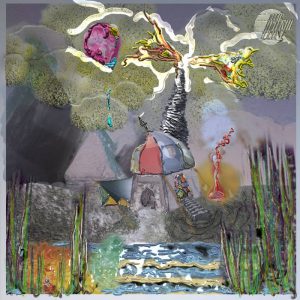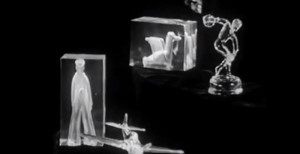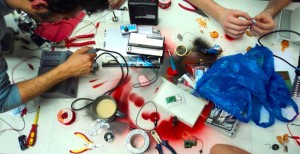Algorithm. It’s a word that seems to get thrown about in a variety of contexts, yet remains misunderstood by a large number of those who, often unknowingly, benefit from its application. With increasingly advanced interfaces between what we do and the information that our online behaviours create, the digital context of our day-to-day lives demands an appropriate language and, whether we understand it or not, that language is data.
Discovering and creating codes allows for the visualisation of the information that natural and cultural processes create. From the patterns of flying flocks of birds to the navigation of a person using a city’s free Wi-Fi, the movement and processing of data in contemporary culture has offered not only a major theme of investigation for artists, but also a chance to personally develop technology and software tailored to that data.
Lines and lines of inanimate, black and white coding on a computer screen hardly appears friendly to those of us who have never interacted with this kind of digital syntax. And the idea of being creative with such a seemingly restrictive toolkit of letters, numbers and symbols might seem strange, particularly when it comes to creating original visual output in two dimensions, or even three. Yet, the ability to translate ideas into code continues to progress the work of visual artists, pushing their practices further into the interdisciplinary space between art and technology. Writing and running an algorithm to process the vast amounts of data produced by a society in a digital context doesn’t simply offer informational results, but introduces a technological aspect to artistic investigations – like a digital sketchbook.
The work of Matthew Plummer-Fernandez explores the automated systems in operation within digital culture by coding tailor-made algorithms to produce a visual, translated output from an ‘original’. ‘Venus of Google’ takes an image from an online search engine, and processes that image (as information) through an algorithm. This algorithmic software, coded by Plummer-Fernandez, then ‘sculpts’ the image, giving it a new and unpredictable aesthetic that resembles the original.
Here, the artist sets up an algorithmic process, which (as you can see from the video above) is a specific system that runs continuously as a loop of repeated instructions. Through the repetition of these instructions (the algorithm), patterns within the data being analysed are expressed visually by an outcome that adheres to a particular aesthetic. Plummer-Fernandez’s ‘Venus’ is dismantled and then reconstructed; the picture is reduced to information (as code) and put through the algorithm – like a filter – to produce the final piece. The altered data-file is presented as the artwork: it’s distant, computational appearance taking on a suitably uniform structure, removing aspects of aesthetic decision from the artist and instead allowing the automation of algorithm to reign.
These kinds of computational processes can be written and directed in some incredibly specific ways. The use of API’s (application programming interface) allow for very particular datasets to be created and explored through algorithm by enabling the aggregation of chosen, online content. Online systems – any of the data available online – can be accessed via an API, which stands as a coded command. This command could request any kind of data (a particular colour or adjective, for example) like a search result – and when written into an autonomously running algorithm, can produce a mass of information from which patterns can be drawn. It is the visualisation of these unpredictable patterns that can produce such interesting, algorithmic artworks.
This ease of access to (online) data is facilitated through code, as a ‘universal language’, for computational data. Since the internet is full of masses of repeated command (as algorithm), copying the basic structure of a generic algorithm makes sense. Especially since the additional adjustments and embellishments made by artists like Plummer-Fernandez can create the most interesting and unexpected aesthetic results. An observation like this illustrates the inherent creative opportunities within coding and algorithmic design; the repetitive processing power of a computer’s software not only saves time, but creates a whole host of autonomous, unpredictable aesthetic results. A coding platform tool like Processing, which is a free to download, open source ‘software sketchbook’, is very popular with artists that use computational methods as a part of their practice. The emphasis on a visual output, as a way of expressing ideas digitally through code, also means that an incredibly rich and generous online community surrounds the use of Processing, further encouraging original ideas through computational data.
It is clear that designing algorithm and designing the product of that algorithm are two very separate parts of digital arts practice. But the technology involved remains critical to the themes being investigated, and understanding the processes of this technology is only becoming more interesting (and in some cases, essential) towards understanding the systems and context of contemporary culture. **
Header image: Processing merchandise t-shirts.





















